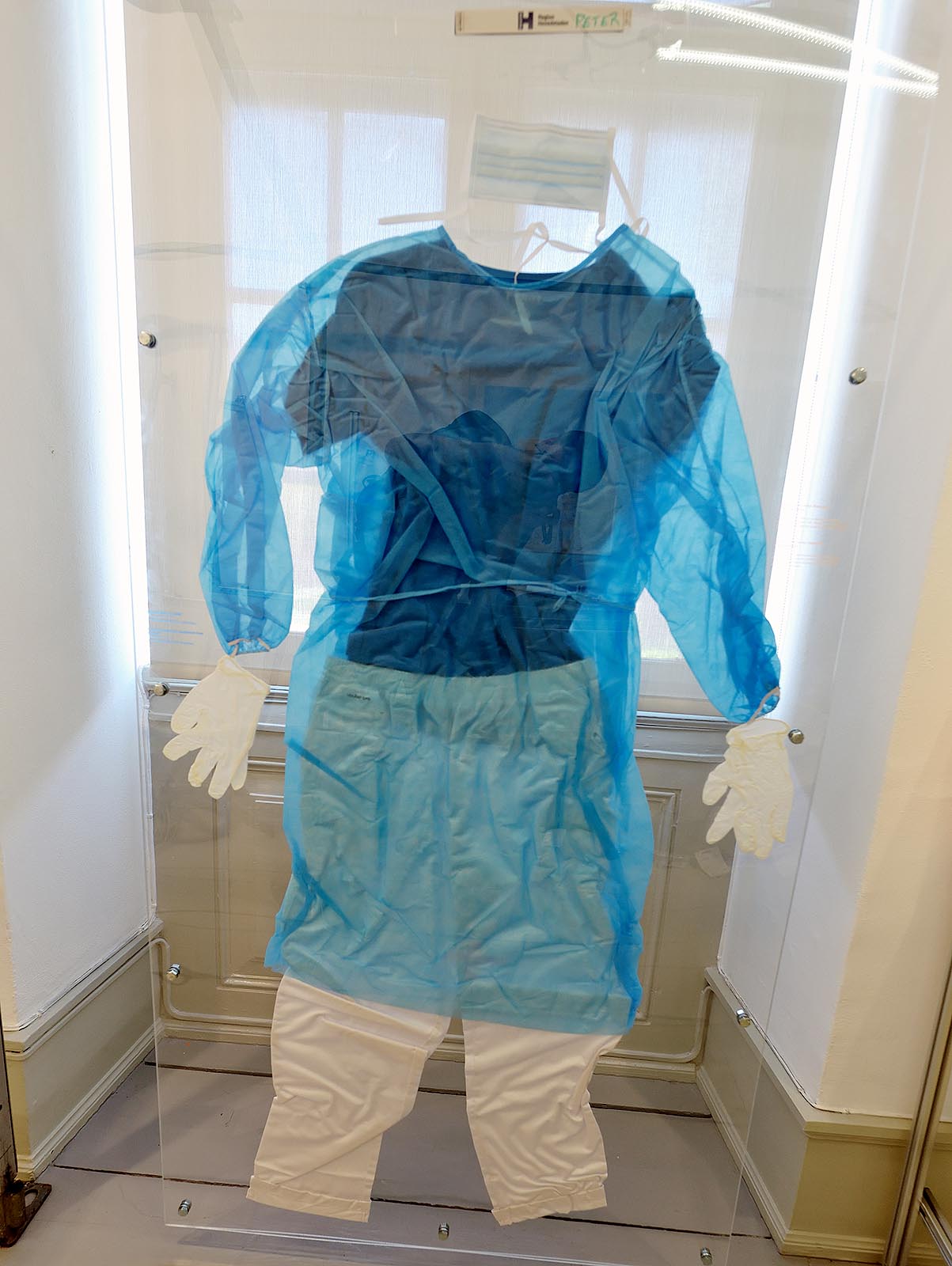Universitetsavisen
Nørregade 10
1165 København K
Tlf: 35 32 28 98 (mon-thurs)
E-mail: uni-avis@adm.ku.dk
—
Coronavirus
Exhibition — Since the beginning of the pandemic, Medical Museion has collected items that tell the story of how Denmark has managed the disease. Although Covid-19 still shapes our everyday lives to some extent, a new exhibition can help us to start processing it, says the exhibition’s curator.
What will we remember most vividly when we look back on the Covid-19 pandemic? The latex gloves, hand sanitiser, face masks, vaccines, the lockdown or something else entirely?
Medical Museion — a museum that contributes to research communication at the Faculty of Health at the University of Copenhagen — is trying to find the answer to this question and many more, even though the pandemic is still ongoing.
Visiting Medical museion
The exhibition will be on display from 12 June 2021 to 28 August 2022. It is open from Tuesday to Friday, between 10:00 and 16:00, and on Saturday and Sunday between 12:00 and 16:00. For employees and students at the University of Copenhagen, admission is free, but all visitors must book a ticket in advance. Read more here.
»Corona will become part of our history. By collecting items related to it, we are helping to ensure that this chapter of history is preserved and shared. I hope that the museum guests of the future will look at these objects with the same enthusiasm as I myself look at the museum’s historical objects from previous disease outbreaks, such as the plague and cholera,« says Bente Vinge Pedersen, historian and head of programme, exhibition & communication at Medical Museion.
The objects will be displayed in a new exhibition, which opens on Saturday 12 June. The exhibition is called Corona will be history one day, too, and it shows Covid-19 in a historical perspective using surprising and illustrative objects.
The Danish Minister of Health Magnus Heunicke’s cardboard sign showing potential infection curves is a classic example, according to Bente Vinge Pedersen. The minister held up the sign for the first time at a press conference on 10 March last year.
»Just a few hours after the press conference, Medical Museion contacted the Ministry of Health to get hold of the sign that Magnus Heunicke had just held up, because it obviously had to go into a museum,« says Bente Vinge Pedersen.
She realises there is a risk that people are so tired of corona that an exhibition about the pandemic may not be their first choice for a day out, but she believes the exhibition has a role to play, nonetheless.
»We all have have things we need to process about corona – and things that we have to reconcile. This exhibition can help us to do that,« she says.
Bente Vinge Pedersen found it interesting to create an exhibition that shows how decision-makers were force to take shots in the dark at the start of the pandemic.
»We have now experienced what it is like to have to act resolutely and do something without quite knowing what kind of disease we were dealing with. The situation in March 2020 is reminiscent of the efforts to prevent the spread of cholera in Copenhagen in 1853, for example,« says Bente Vinge Pedersen.
The creators
Bente Vinge Pedersen is the head of the programme section at the Medical Museion and is the curator of the exhibition. She worked on the exhibition alongside museum curators Anne Bernth Jensen and Niels Vilstrup, conservator Nanna Gerdes, visual interpreter Kathrine Baastrup and designers Jacob Egebjerg and Valdemar Thrysøe, who were hired for this project.
Many of the strategies we use today, such as testing, infection tracing and isolation, draw on historical experiences from past diseases and epidemics:
»We have an example in our exhibition that shows how they tried to contain tuberculosis outbreaks with test centres in the middle of the Town Hall Square in the early 1950s and with X-ray buses that drove out to people,« she says.
As Bente Vinge Pedersen puts it, we are witnessing history in the making:
»So although it may seem like this is the first time we have been the midst of a dangerous pandemic, the history of medicine shows us tactics and strategies similar to those we are using now.«
Bente Vinge Pedersen believes that Minister of Health Magnus Heunicke’s cardboard sign is the most memorable corona artefact for now.
»But after some time has passed, we might remember Covid-19 for something completely different,« she says.
There is also one element in the exhibition that was not part of any previous pandemics:
»Covid-19 is the first pandemic in which we have been able to monitor all virus variants because we have developed gene technology to monitor the mutations. This was not possible during the Spanish flu epidemic from 1918 to 1920, for example. Gene technology is one of the hallmarks of our time, and it has affected the ways in which we have tried to control the Covid-19 pandemic,« says Bente Vinge Pedersen.

